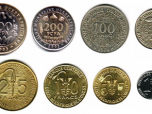
 Tourists who are their way to West Africa will find Benin an interesting stop. Benin has not been in the public eye for a long time, which is a pity, considering the natural and historical treasures that the club-shaped country holds. Benin has a coastline to the south, Togo to the west, Nigeria to the east, and Niger and Burkina Faso to the north.
Tourists who are their way to West Africa will find Benin an interesting stop. Benin has not been in the public eye for a long time, which is a pity, considering the natural and historical treasures that the club-shaped country holds. Benin has a coastline to the south, Togo to the west, Nigeria to the east, and Niger and Burkina Faso to the north.
Before it was Benin, it was called the Dahomey Kingdom, and wielded the greatest power among all the empires in Africa. These days, traces of the Dahomeyans rich culture and architecture are still evident in the ruins of Abomey. In contrast, Ouidah is a reminder of the slave economy that fueled the kingdom’s rise to power. A place of interest is Ouidah’s Route d’Esclaves—the final stretch of soil that African slaves trodded on before they were shipped to Brazil and other Caribbean territories.
The history of Benin, with its African-Brazilian connection, is preserved in the museums in Ouidah, as well as those in Porto Novo. In contrast, city life in Benin provides a lively experience for travelers, thanks to the night life and shopping areas.
In addition to getting a of history and metropolitan Africa, Benin also offers quaint little treasures and secrets that you can pluck from the streets and beaches. Voodoo in its authentic, unadulterated form is everywhere, from the town plazas to the local stores, to the fetish markets that sell an array of animal skins and heads. You can also get up close to Pendjari’s wildlife and meet and greet lions, crocodiles and elephants.
The best time to visit Benin is between November and February, when the weather is cool and dry. A word of advise, exercise precaution when enjoying the sights and sounds of Benin, unfortunately, the streets are not free from crime and violence.








